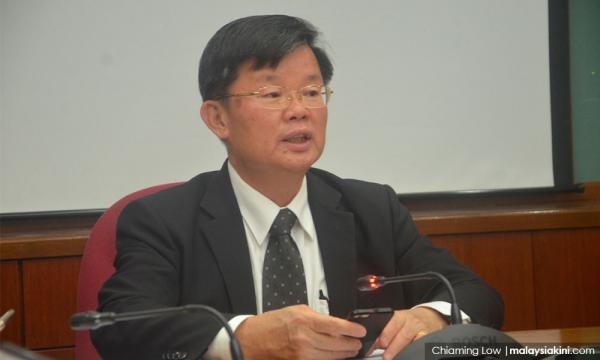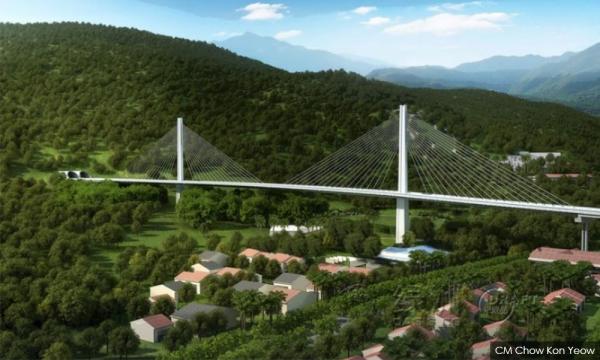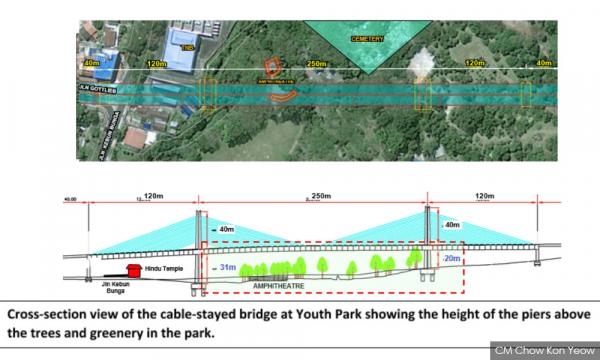Penang Chief Minister Chow Kon Yeow has ticked off local NGOs that have been voicing concerns over the proposed construction of the Pan Island Link 1 (PIL 1) highway.
As part of the proposed RM27 billion Penang Transport Master Plan, the second schedule of the project's Environmental Impact Assessment report is currently on public display until Aug 10. However, Chow said there had been "clear misinformation" regarding the portrayal of the PIL 1.
"There is clear misinformation on the PIL 1, such as the use of inaccurate visuals and description, which provoke unnecessary negative sentiments among the general public," Chow said in a statement today.
"The Penang government welcomes open discourse on the Penang Transport Master Plan (PTMP), and while doing so, we wish to rectify inaccurate representation of PIL 1 to the public," he added.
Chow also chairs the state transport, information, land matters and land development committee.
He then went on to refute one of the NGO's concerns regarding the tunnelling on Penang's hills and the proposed construction method, which were allegedly destructive to the environment and people's lives.
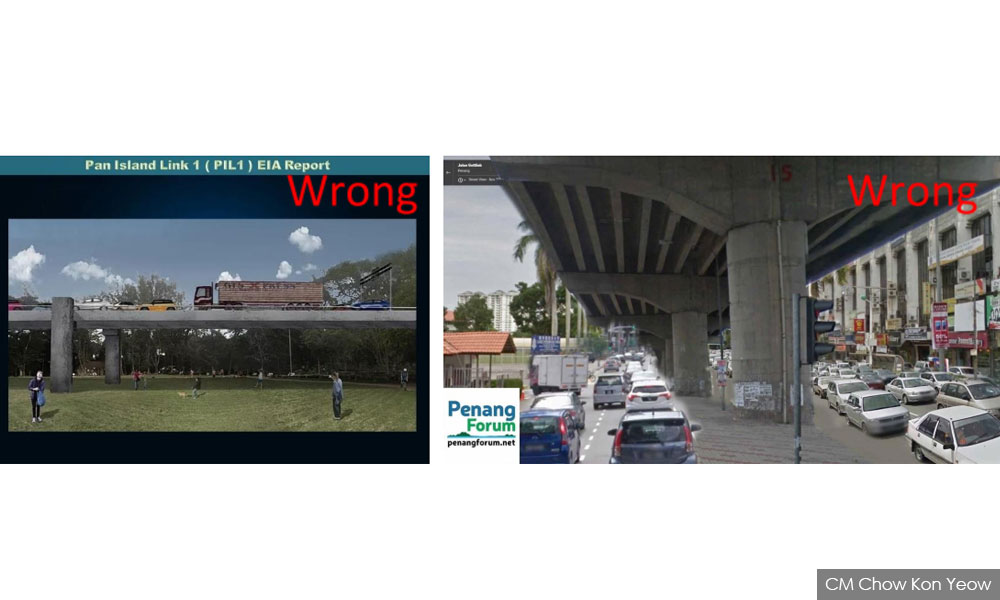
Chow claimed that the "drill and blast" tunnelling method is acknowledged as the most-used, "established and proven effective method" for tunnel excavation in the world.
He said the well-established method is widely used in many construction projects around the world and in Malaysia, as it can be applied to all types of rocks.
"It is clear the hills where the tunnels pass through are still standing tall today," Chow said.
"It needs to be emphasised that the tunnel construction is carried out under controlled conditions with added safety measures to minimise potential concerns," he added.
Chow was responding to Penang NGOs that had asked Prime Minister Dr Mahathir Mohamad to intervene to stop the highway project, while some raised concerns over the amount of explosives to be used to blast hills and the environmental damage such a method might entail.
NGOs like Penang Forum have also urged the Penang government to review the need for such a massive road project like the PTMP, which includes the construction of the RM6.3 billion undersea tunnel linking Gurney Drive to Butterworth on the mainland.
'Experience and expertise'
To prove his claims, Chow cited the example of highway tunnels built in Malaysia using this method, include the Genting Sempah Tunnel, the first highway tunnel in Malaysia which was officially opened in 1979.
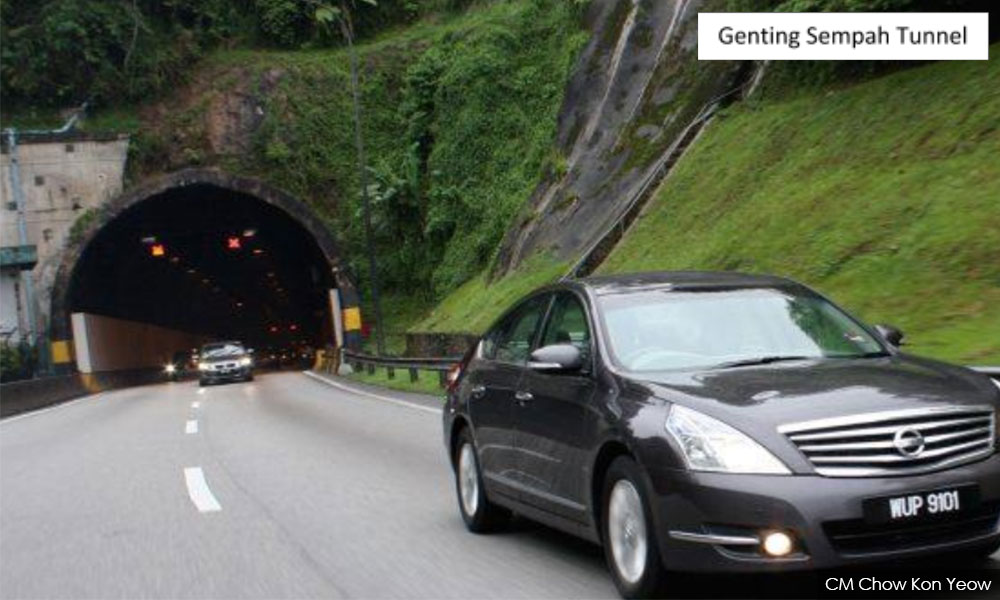
The 900m tunnel is located on the Karak Highway connecting Hulu Gombak in Selangor to Genting Sempah, Pahang.
Another example of a highway tunnel built using the same method is the 800m Menora Tunnel on the North-South Expressway Northern Route near Jelapang, Ipoh.
Opened in 1986, the highway tunnel runs underneath the Keledang Range in Perak, Malaysia.
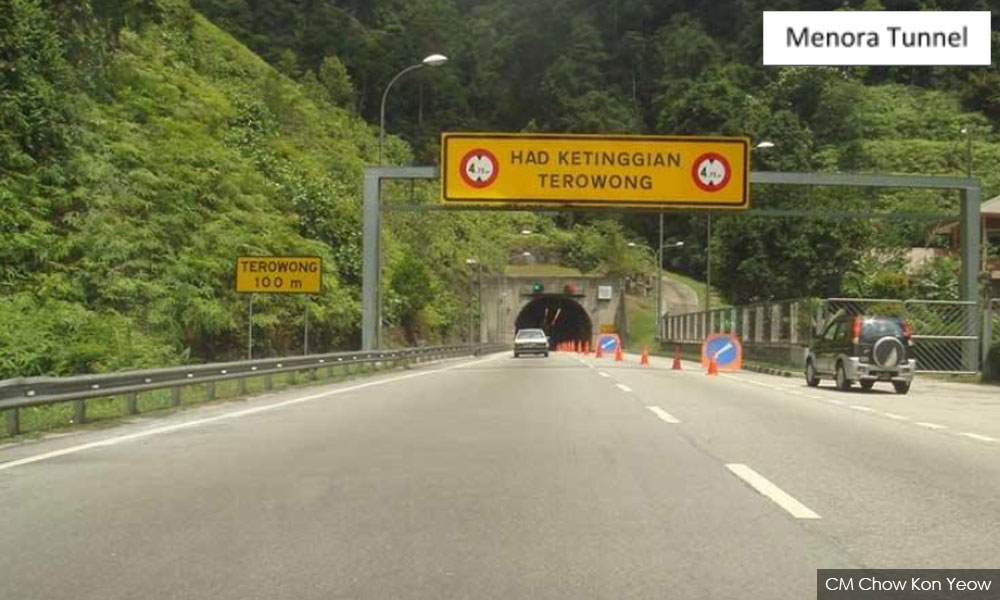
Chow said concerns such as vibration, noise and dust will be addressed by installation of blasting mats to prevent the dispersal of flying rocks and to suppress noise and dust.
He added that additional ground support, such as bolting (strengthening of tunnel structure using bolts) and shotcreting (spraying of concrete to reinforce tunnel structure) will be used.
"A full range of monitoring, ground surveillance and precautionary measures to protect workers, the public, hillslopes and property safety will be employed," Chow said.
"As tunnelling is a highly specialised form of construction, the Work Package Contractor will need to demonstrate a high level of experience and expertise with a strong safety track record, before being considered for the job."
'Full compliance'
Chow also promised that as stated in the PIL 1 EIA report, the following international and Malaysian guidelines will be fully complied with to ensure the safety of workers and the public at large during the tunnelling process.
These guidelines are:
- Underground Construction (Tunnelling), Occupational Safety and Health Administration, US Department of Labor, OSHA 3115-06R (2003); and
- Guidelines on Safety and Health in Tunnel Construction Industrial Health Division, Department of Occupational Safety and Health, Ministry of Human Resources Malaysia (July 1998).
He said it would be misleading to direct the public’s attention to the amount of explosives required, as opposed to the strict control measures that will be executed before, during and after the tunnel construction.
"The question of how much explosives will be needed for tunnel construction is redundant, as it is only but a means to complete the tunnelling works.
"Instead, one should be asking what is the level of environmental and safety standards which we should adhere to," he added.
"Focusing the public’s attention to unnecessary details will not only be counter-productive, but undermines the importance of PIL 1 to improve Penang Island’s road network hierarchy and disperse worsening traffic congestion in key residential and commercial areas on the island," Chow stressed.

